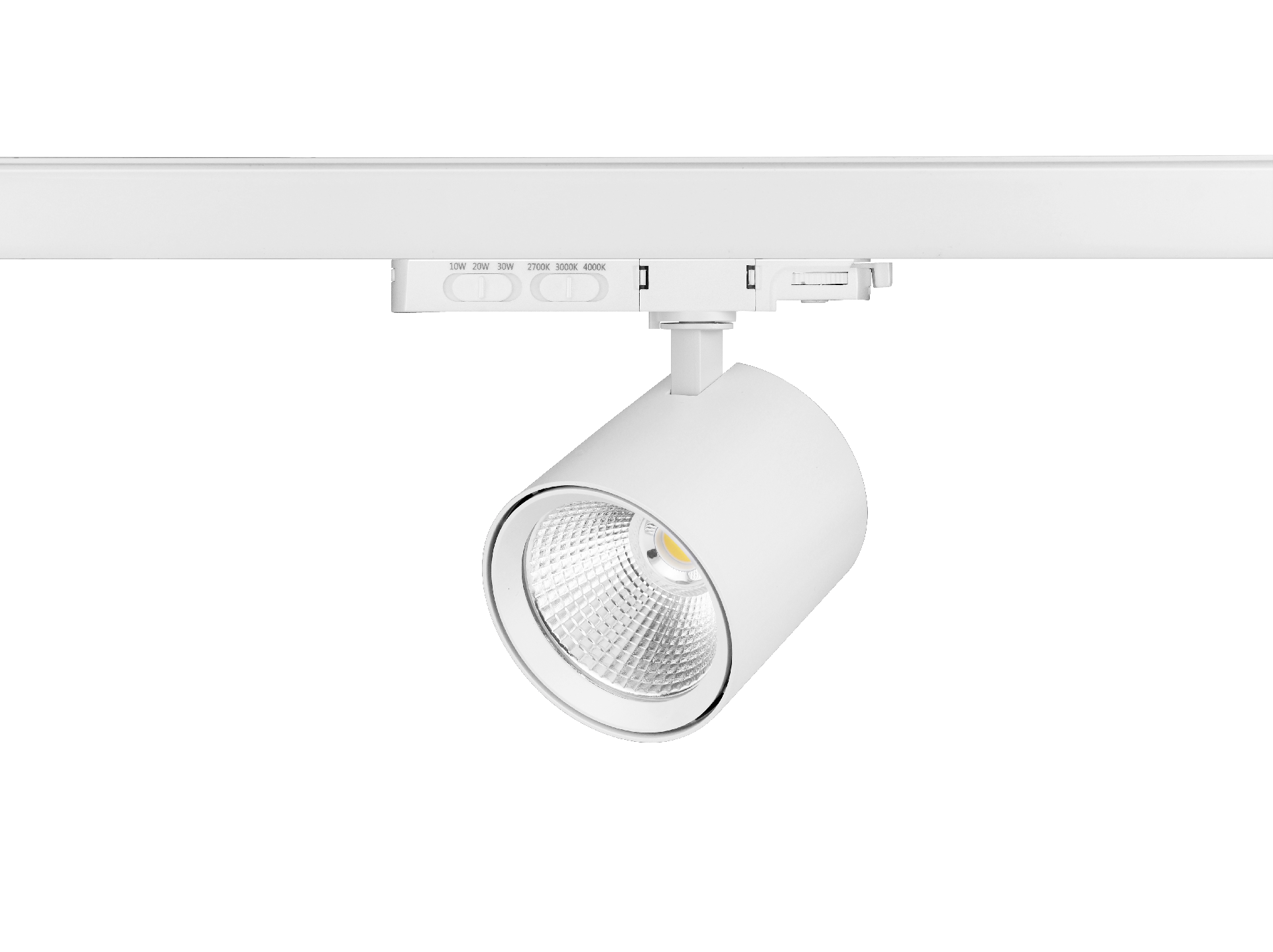
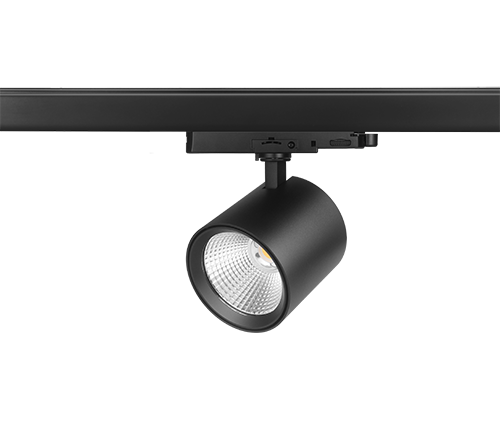
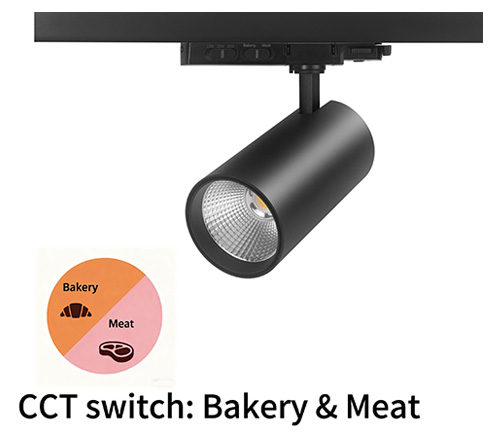
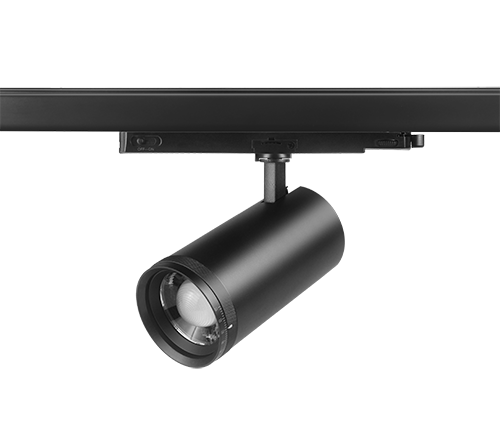

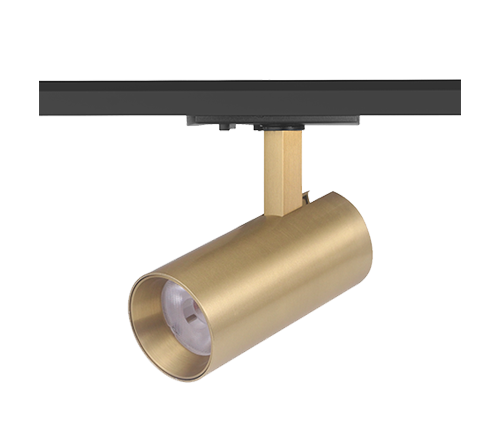
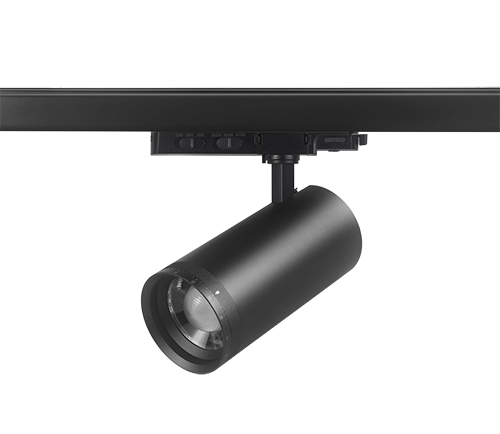
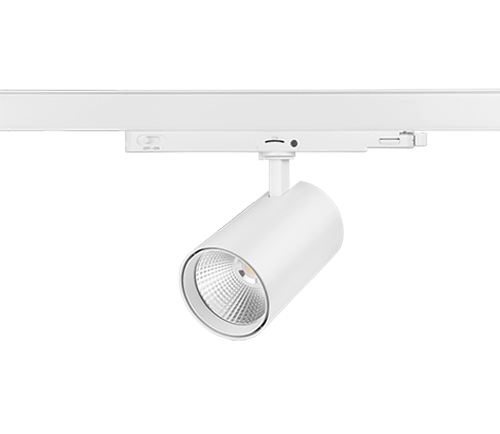
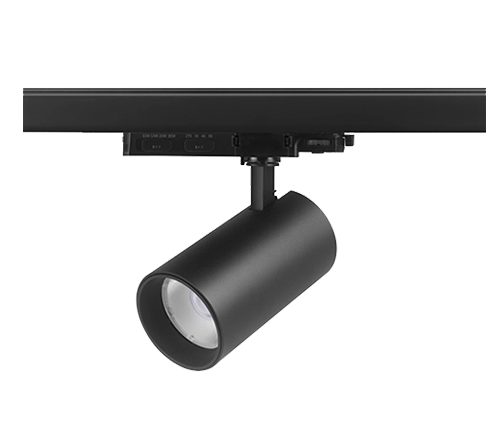









Here, let’s have a discuss about taking your track lighting control up a notch – or even three! If you’ve ever felt limited by a single switch controlling all your track lights, or wished you could create different moods according to the environment or highlight various items in the shops from the same track run, then this 3 Circuit Dimmable 30W Track Light system might be the sophisticated solution you’re looking for.

This isn’t just about adding more track lights in the rooms; but about expanding your control and design possibilities. But what exactly is a 3 Circuit systems, how does the dimming work with it, and is it the right option for your space, or perhaps an over-complication?
Maybe you've heard the phase "3 Circuit track light" or ever seen it in a lot occasions like the commercial projects, high-end residential designs. While what exactly makes it different from the track lighting you know more about?
Consider a typical, simple 1-circuit track light system as a single-lane road, where all traffic (lights) flows in unison under the control of a single signal (switch/dimmer). In contrast, a three-circuit track light system is similar to a three-lane highway that has been expertly disguised as a single, smooth track.
This kind of track has three separate electrical circuits (sometimes known as "live" conductors) within, together with a neutral conductor and frequently a ground. Because of this clever design, you can:
Attach distinct sets of track light fixtures to each of these three circuits.
Use separate switches or, more crucially for our subject, separate dimmers to individually control each group (circuit).
You may therefore construct three different light zones, each having its own on/off and dimming control, from a single physical track run. That's a big increase in adaptability!
On their adapter, the majority of track heads made for three-circuit systems contain a little selector dial or switch. The standard positions on this dial are "1," "2," and "3" (or L1, L2, L3). To assign that specific fixture to one of the three internal circuits within the track, just turn this dial once the track head is attached.
For instance:
The switch/dimmer connected to circuit 1 will control lights that are set to "1."
The switch/dimmer connected to circuit 2 will control lights that are set to "2."
The switch/dimmer connected to circuit 3 will control lights that are set to "3."
With what looks to be a single installation, you may have a variety of lights on separate circuits all down the same track, providing you highly flexible lighting options.
It's quite simple:
One Circuit Track light: All lights turn on, off, and dim simultaneously on a single circuit. the standard workhorse.
Two separate circuits make up a two-circuit track light. Two zones of control are better than one.
Three-circuit track light: three separate circuits. Of these popular multi-circuit hardwired alternatives, this one is the most adaptable, providing three separate zones of control.
Your control over various groupings of lights on that track gets more precise the more circuits you have.
3-circuit track systems are frequently referred to by regional standards or brand names that are now widely used. A 3-circuit arrangement is sometimes implied by terms like "Euro track," "Global Trac" (a well-known brand), or references to particular manufacturer systems (such as Staff, Erco, Eutrac, and Concord Lytespan 3 in the past). In order to ensure compatibility between tracks, connectors, and fixtures made for them, these systems usually follow specific physical and electrical standards. For larger projects, this standardization is essential since it guarantees some future-proofing.
This is where a 3-circuit dimmable track light system truly shines. Each circuit can be dimmed independently since they are all electrically independent.
Consider a store display:
Circuit 1: The track's general ambient illumination is decreased to a comfortable level.
Circuit 2: Accent spotlights that highlight important products and are kept brighter.
Circuit 3: Wall-washers producing a background that is softly glowing.
All of this from a single track run, with individual dimming control for each circuit! Layered, dynamic, and incredibly flexible lighting schemes are made possible by this.
Each circuit you wish to dim will require its own dimmer. Your fixtures, wiring, and intended performance will determine which dimming technology is best for each circuit:
Three distinct phase-cut wall dimmers, either TRIAC-based (leading-edge) or ELV-based (trailing-edge, better for LEDs), can be used, with each dimmer managing one of the three circuits.
Advantages For every circuit, normal mains wiring can be used from the dimmer location to the track feed.
Cons: To prevent flicker or buzz, make sure your dimmers and LED track head drivers are properly balanced for each circuit.
Each of the three circuits can be controlled by a separate 0-10V dimmer if your track heads are dimmable. This would need returning each circuit's mains power and a different pair of low-voltage control wires for every 0–10V dimmer to the corresponding drivers on each circuit.
Advantages: Superb, seamless LED dimming.
Cons: The extra low-voltage control pairs for each of the three circuits necessitate more intricate wiring.
Planning the wiring from your control point, which houses the switches and dimmers, to the track's power feed is essential to a successful 3-circuit installation. The track's live-end connector usually requires three switched (or dimmed) "hot" wires, a common neutral, and a ground. One of the three circuits will be powered by each switched hot. This requires more work than wiring a single circuit track, and it's usually best left to a licensed electrician.

3-circuit track systems are a mainstay of professional lighting design, particularly in retail and commercial settings, for a reason.
This is the main advantage. One inconspicuous track provides three different lighting zones or tiers. In comparison to placing several distinct tracks, this results in less visual clutter on the ceiling while yet producing a very adaptable lighting system. The goal is to maximize control while minimizing hardware interference.
Layering is frequently used in effective lighting design:
Ambient Light: The whole amount of light.
Task Light: Concentrated light for particular tasks.
Accent Light: Drawing attention to items, artwork, or architectural details.
You can assign distinct circuits to these several tiers from the same track with a 3-circuit system. One circuit for ordinary downlights, another for artwork with movable spots, and a third for wall washers, for instance. To achieve the ideal balance, each can then be dimmed separately.
Displays and layouts are constantly changing in places like showrooms, art galleries, and retail stores. Lighting may be readily adjusted thanks to 3-circuit dimmable track lighting:
As necessary, re-aim the fixtures. Just turn the selector dial on a fixture to change which circuit it is on. Without rewiring the track itself, modify the dimming settings for each circuit to fit new exhibits or displays. In the long term, this flexibility saves a great deal of time and money.
Only the areas that need lighting need to be powered and illuminated thanks to the three separate circuits. For example, one or two circuits may be totally switched off or dimmed during quieter times in a store, greatly lowering energy use while preserving necessary lighting on a third circuit.
3-circuit track systems are typically firmly constructed and designed with clean, architectural aesthetics in mind, and they are frequently intended for commercial and professional use. They are designed to withstand the rigors of frequent adjustment and, if needed, increased loads.
Despite its strength, a 3 Circuit Track Light system isn't always the best solution.
Naturally, compared to 1-circuit or even 2-circuit hardware, 3-circuit track components (the track, connections, and live ends) are more complicated and hence typically cost more. Additionally, the installation will usually be more labor-intensive and consequently more expensive because it requires wiring for three different controls.
Putting out a three-circuit track and hoping for the best is not an option. It needs to be well planned:
How are you going to divide your lights among the three circuits?
Where are you going to put your three switches/dimmers?
How will the controllers' wiring be connected to the track?
To maximize its advantages, this initial consideration is essential.

Because of its adaptability, 3-circuit dimmable track lighting excels in a range of challenging settings.
This application is traditional. Several circuits can be used by retailers to: Draw attention to promotional displays (Circuit 1).
Install general ambient lighting in the store (Circuit 2).
Draw attention to particular product categories or architectural elements (Circuit 3).
Quick shifts in mood and attention are made possible by dimming each circuit, which is essential for "dynamic retail lighting solutions."
Curators can employ a third circuit for route or explanatory panel lighting, a second circuit for precisely directed accent lights on sculptures (perhaps dimmed for conservation), and a third circuit for even wall washing. For rotating displays, this "gallery track lighting control" provides accuracy and flexibility.
3-circuit track can offer the following benefits in larger homes, living rooms, or open-plan areas:
ambient light in general; task lighting above a kitchen island or reading corner; accent lighting on architectural features or artwork.
Each component may be separately dimmed to create the ideal ambiance, all from a single elegant track.

After this in-depth analysis, is a 3-Circuit Dimmable Track Light system the revolutionary solution your project requires in 2025?
To build many lighting zones or layers from a single track run, you require a great deal of freedom.
You're illuminating a store, gallery, museum, upscale home, or hospitality location where versatile and powerful lighting is essential.
To highlight different features or create particular moods, you want to be able to individually dim separate groups of lights on the same track.
You value a reliable, high-end, hardwired solution that can be improved with smart dimmers for every circuit.
In order to properly plan and install the more complicated wiring, you are performing a major restoration or new construction.
All of the lights on a track can function as a single group, thus your lighting needs are fairly basic (a 1-circuit system would suffice).
The higher cost of 3-circuit hardware and installation is a barrier because you have a very limited budget.
If you need more than three zones of individual fixture management, DALI or DMX may be more suitable, albeit more complicated.
Anyone who is serious about flexible, layered, and impactful lighting design will find a 3-Circuit Dimmable Track Light system to be an effective tool. It's an investment in adaptability, ambience, and functionality that will pay off for years to come.
Investigating a 3-circuit solution with an experienced lighting specialist is undoubtedly a smart choice if you have an idea for a location where lighting is essential to defining experiences and highlighting features!
Q1: Is the 3 Circuit track light with POWER CCT switchable?
Yes, these 3 phase track lights are CCT adjustable and POWER switchabl.
Q2: Dose this 3 Circuit track light can be dimmable
Certainly, this 3 Circuit CCT track light is triac dimmable.
Explore more product details on the page of www.pustlux.com